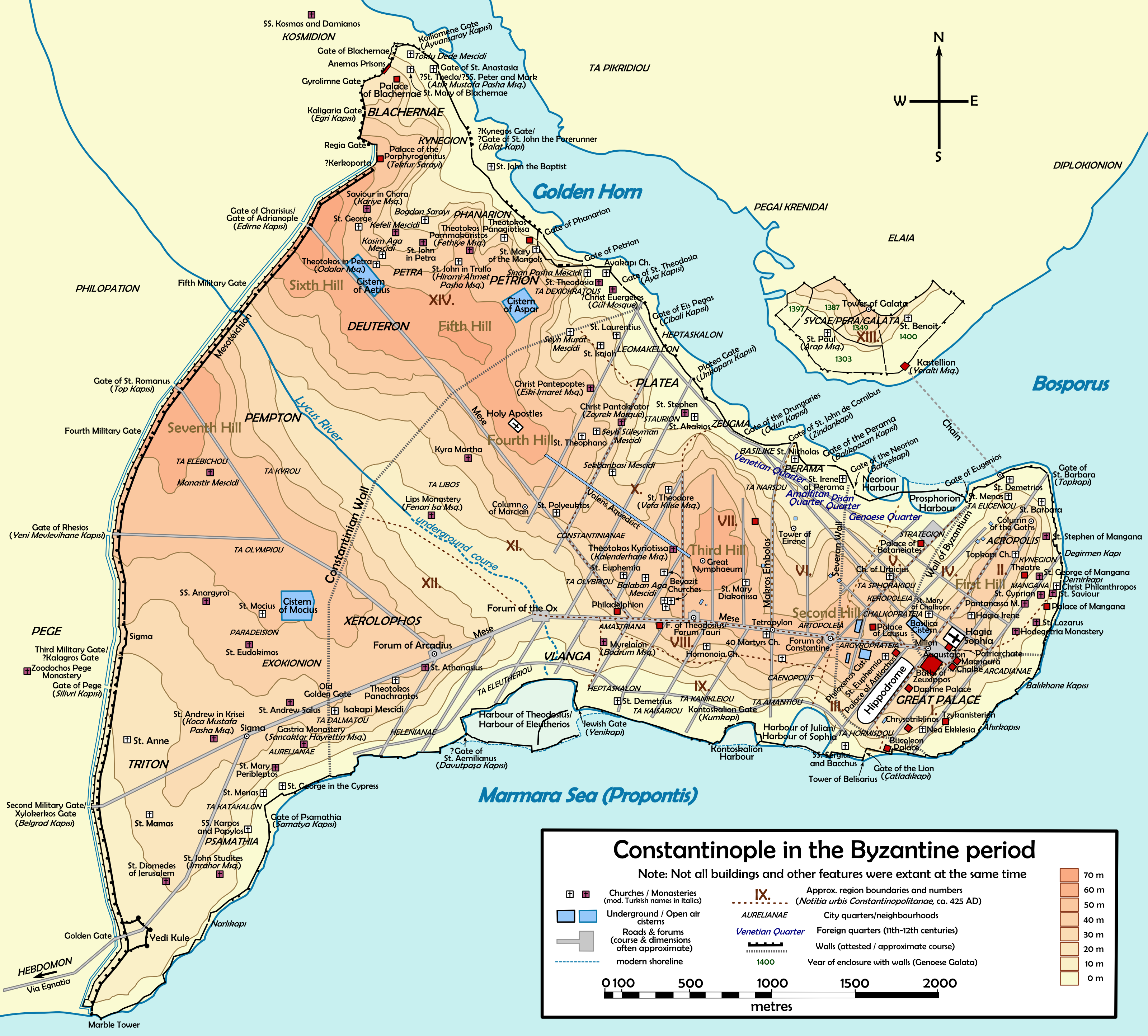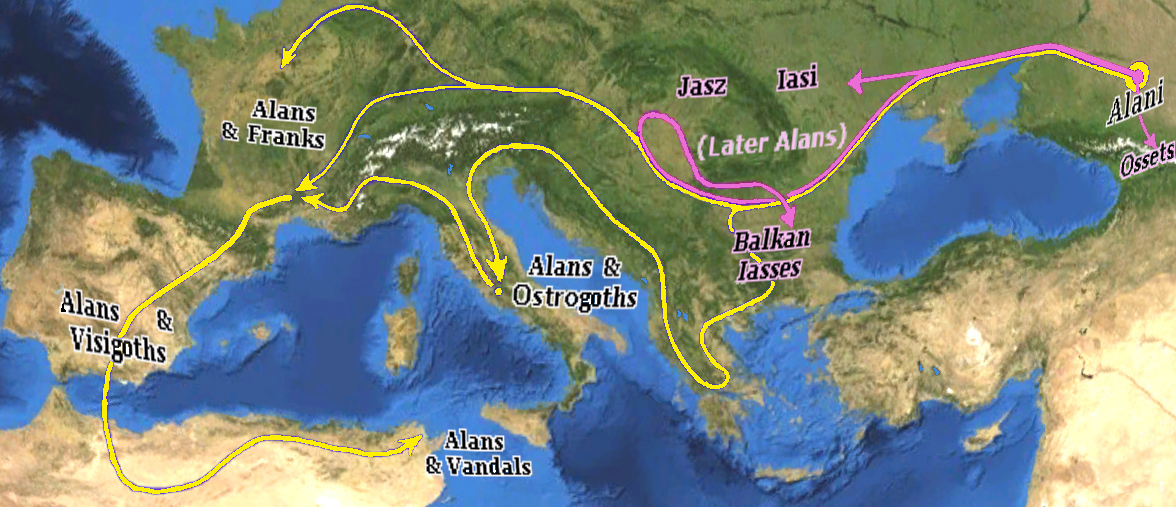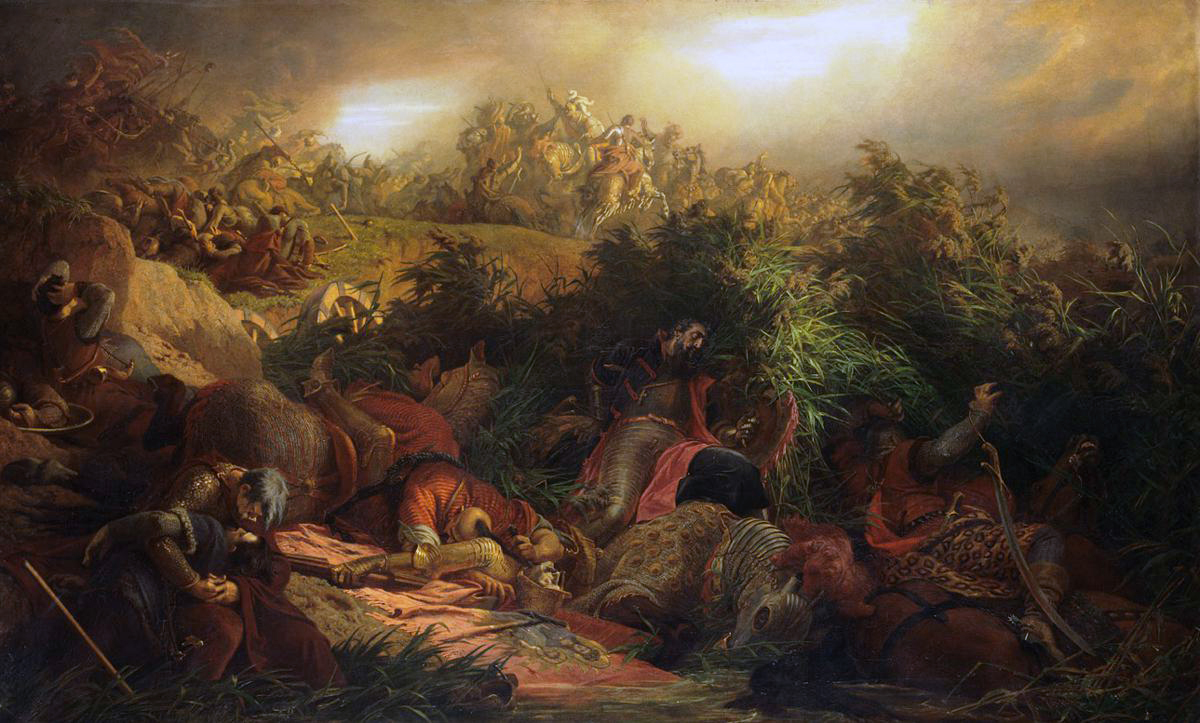|
Cistern Of Aspar
The Cistern of Aspar () or Great Cistern (), known in Turkish as Sultan Selim Çukurbostanı ("sunken garden of Sultan Selim"),Müller-Wiener (1977), p. 279 was a Byzantine open-air water reservoir in the city of Constantinople. Location The cistern is located in Istanbul, in the district of Fatih (the walled city), in the most elevated part of the quarter of Fener, in the neighborhood named after the building '' Çukurbostan'', near the Yavuz Selim Mosque, between ''Sultan Selim Caddesi'' and ''Yavuz Selim Caddesi''. It lies on the eastern slope of the fifth hill of Istanbul, overlooking the Golden Horn. History The construction of this cistern, which lay in the fourteenth region of Constantinople, in the area called by the Byzantines ''Petrion'', was started in 459, under Emperor Marcian (r. 450-57), by Aspar, an Alan- Gothic general serving the empire, and by his sons Ardabur and Patricius, during the consulship of Ricimer and Patricius. According to the 7th-century ''Chr ... [...More Info...] [...Related Items...] OR: [Wikipedia] [Google] [Baidu] |
Byzantine Constantinople-en
The Byzantine Empire, also known as the Eastern Roman Empire, was the continuation of the Roman Empire centred on Constantinople during late antiquity and the Middle Ages. Having survived the events that caused the fall of the Western Roman Empire in the 5th centuryAD, it endured until the fall of Constantinople to the Ottoman Empire in 1453. The term 'Byzantine Empire' was coined only after its demise; its citizens used the term 'Roman Empire' and called themselves 'Romans'. During the early centuries of the Roman Empire, the western provinces were Latinised, but the eastern parts kept their Hellenistic culture. Constantine I () legalised Christianity and moved the capital to Constantinople. Theodosius I () made Christianity the state religion and Greek gradually replaced Latin for official use. The empire adopted a defensive strategy and, throughout its remaining history, experienced recurring cycles of decline and recovery. It reached its greatest extent un ... [...More Info...] [...Related Items...] OR: [Wikipedia] [Google] [Baidu] |
Alans
The Alans () were an ancient and medieval Iranian peoples, Iranic Eurasian nomads, nomadic pastoral people who migrated to what is today North Caucasus – while some continued on to Europe and later North Africa. They are generally regarded as part of the Sarmatians, and possibly related to the Massagetae. Modern historians have connected the Alans with the Central Asian Yancai of China, Chinese sources and with the Aorsi of Ancient Rome, Roman sources. Having migrated westwards and becoming dominant among the Sarmatians on the Pontic–Caspian steppe, the Alans are mentioned by Roman sources in the . At that time they had settled the region north of the Black Sea and frequently raided the Parthian Empire and the South Caucasus provinces of the Roman Empire. From the Goths broke their power on the Pontic Steppe, thereby assimilating a sizeable portion of the associated Alans. Upon the Huns, Hunnic defeat of the Goths on the Pontic Steppe around , many of the Alans migrated w ... [...More Info...] [...Related Items...] OR: [Wikipedia] [Google] [Baidu] |
Suleyman I
Suleiman I (; , ; 6 November 14946 September 1566), commonly known as Suleiman the Magnificent in the Western world and as Suleiman the Lawgiver () in his own realm, was the Ottoman sultan between 1520 and his death in 1566. Under his administration, the Ottoman Empire ruled over at least 25 million people. After succeeding his father Selim I on 30 September 1520, Suleiman began his reign by launching military campaigns against the Christian powers of Central and Eastern Europe and the Mediterranean; Belgrade fell to him in 1521 and Rhodes in 1522–1523, and at Mohács in 1526, Suleiman broke the strength of the Kingdom of Hungary. Presiding over the apex of the Ottoman Empire's economic, military, and political strength, Suleiman rose to become a prominent monarch of 16th-century Europe, as he personally led Ottoman armies in their conquests of a number of European Christian strongholds before his advances were finally checked at the siege of Vienna in 1529. On the ... [...More Info...] [...Related Items...] OR: [Wikipedia] [Google] [Baidu] |
Hagia Sophia
Hagia Sophia (; ; ; ; ), officially the Hagia Sophia Grand Mosque (; ), is a mosque and former Church (building), church serving as a major cultural and historical site in Istanbul, Turkey. The last of three church buildings to be successively erected on the site by the Byzantine Empire, Eastern Roman Empire, it was completed in AD 537, becoming the world's largest interior space and among History of Roman and Byzantine domes, the first to employ a fully pendentive dome. It is considered the epitome of Byzantine architecture and is said to have "changed the history of architecture". From its dedication in 360 until 1453 Hagia Sophia served as the cathedral of Constantinople in the Divine Liturgy#Byzantine Rite, Byzantine liturgical tradition, except for the period 1204‑1261 when the Latin Empire, Latin Crusaders installed their own Hierarchy of the Catholic Church, hierarchy. After the fall of Constantinople in 1453, it served as a mosque, having its Minaret, minarets added ... [...More Info...] [...Related Items...] OR: [Wikipedia] [Google] [Baidu] |
Pierre Gilles
Petrus Gyllius or Gillius (or Pierre Gilles) (1490–1555) was a French natural scientist, topographer and translator. Gilles was born in Albi, southern France. A great traveller, he studied the Mediterranean and Orient, producing such works as ''De Topographia Constantinopoleos et de illius antiquitatibus libri IV,'' ''Cosmæ Indopleutes'' and ''De Bosphoro Thracio libri III,'' in which he provided the first written account of the Bosphorus, in Latin, as well as a book about the fish of the Mediterranean. Sent by King Francis I of France to Constantinople in 1544-47 to find ancient manuscripts, he discovered a manuscript of the geographical work of Dionysius of Byzantium and wrote a Latin paraphrase of it. Most of his books were published after his death by his nephew. In 1533 he also translated Claudius Aelianus. He died of malaria in Rome while accompanying his patron, Cardinal Georges d'Armagnac. It is stated that Guillaume-Joseph Grelot continued his work in the 17th-cen ... [...More Info...] [...Related Items...] OR: [Wikipedia] [Google] [Baidu] |
Fall Of Constantinople
The Fall of Constantinople, also known as the Conquest of Constantinople, was the capture of Constantinople, the capital of the Byzantine Empire by the Ottoman Empire. The city was captured on 29 May 1453 as part of the culmination of a 55-day siege which had begun on 6 April. The attacking Army of the classical Ottoman Empire, Ottoman Army, which significantly outnumbered Constantinople's defenders, was commanded by the 21-year-old List of sultans of the Ottoman Empire, Sultan Mehmed the Conqueror, Mehmed II (later nicknamed "the Conqueror"), while the Byzantine army (Palaiologan era), Byzantine army was led by List of Byzantine emperors, Emperor Constantine XI Palaiologos. After conquering the city, Mehmed II made Constantinople the new Ottoman capital, replacing Edirne, Adrianople. The fall of Constantinople and of the Byzantine Empire was a watershed of the Late Middle Ages, marking the effective end of the Roman Empire, a state which began in roughly 27 BC and had la ... [...More Info...] [...Related Items...] OR: [Wikipedia] [Google] [Baidu] |
Arcadius
Arcadius ( ; 377 – 1 May 408) was Roman emperor from 383 to his death in 408. He was the eldest son of the ''Augustus'' Theodosius I () and his first wife Aelia Flaccilla, and the brother of Honorius (). Arcadius ruled the eastern half of the empire from 395, when their father died, while Honorius ruled the west. In his time, he was seen as a weak ruler dominated by a series of powerful ministers and by his wife, Aelia Eudoxia.Nicholson, p. 119 Early life Arcadius was born in 377 in Hispania, the eldest son of Theodosius I and Aelia Flaccilla, and brother of Honorius. On 19 January 383, his father declared the five-year-old Arcadius an Augustus and co-ruler for the eastern half of the Empire. Ten years later a corresponding declaration made Honorius the Augustus of the western half. Arcadius passed his early years under the tutelage of the rhetorician Themistius and Arsenius Zonaras, a monk. Reign Early reign Both of Theodosius's sons were young and inexperien ... [...More Info...] [...Related Items...] OR: [Wikipedia] [Google] [Baidu] |
Bonus (patrician)
Bonus (, died 627) was a Byzantine Empire, Byzantine statesman and general, one of the closest associates of Emperor Heraclius (r. 610–641), who played a leading role in the successful defense of the imperial capital, Constantinople, during the Avars (Carpathians), Avar–Sassanid Persia, Persian Siege of Constantinople (626), siege of 626. Biography Almost nothing is known of Bonus's origins or private life. In a panegyric poem dedicated to Bonus in 626, George Pisides calls him a "companion in arms" of Heraclius, possibly implying that Bonus accompanied him when he sailed from Exarchate of Africa, Africa in 610 to overthrow Emperor Phocas (r. 602–610). He is also known to have had an illegitimate son, John, who was sent as a hostage to the Avars (Carpathians), Avars in 622.. At this time, the Byzantine Empire was engaged in a Byzantine-Sassanid War of 602–628, prolonged struggle with its large eastern antagonist, the Sassanid Persian Empire. Over the previous twenty year ... [...More Info...] [...Related Items...] OR: [Wikipedia] [Google] [Baidu] |
Chronicon Paschale
''Chronicon Paschale'' (the ''Paschal'' or ''Easter Chronicle''), also called ''Chronicum Alexandrinum'', ''Constantinopolitanum'' or ''Fasti Siculi'', is the conventional name of a 7th-century Greek Christian chronicle of the world. Its name comes from its system of chronology based on the Christian paschal cycle; its Greek author named it ''Epitome of the ages from Adam the first man to the 17th year of the reign of the most August Heraclius''. Structure The Eastern Roman Empire inherited the concept of chronicles (''Annales'') and histories (''Historia'') as distinct genres, with different writing styles and public appeal; this distinction can already be found in the works of Sempronius Asellio in the 1st century BC. As with other examples of its genre, the ''Chronicon Paschale'' is a popular account which relates anecdotes, physical descriptions of the chief personages (which at times are careful portraits), and extraordinary events such as earthquakes and the appearance of c ... [...More Info...] [...Related Items...] OR: [Wikipedia] [Google] [Baidu] |
Ricimer
Ricimer ( , ; – 19 August 472) was a Romanized Germanic general, who ruled the remaining territory of the Western Roman Empire from 456 after defeating Avitus, until his death in 472, with a brief interlude in which he contested power with Procopius Anthemius. Deriving his power from his position as ''magister militum'' of the Western Empire, Ricimer exercised political control through a series of puppet emperors. Ricimer's death led to unrest across Italy and the establishment of a Germanic kingdom on the Italian Peninsula. Lineage The date of Ricimer's birth is unknown. Some scholars have dated it as late as the early 430s, which would have made him unusually young when he rose to power. A birthdate of around 418 is more likely. The names of his parents are also unknown. In his panegyric to Anthemius, given in 468, the poet Sidonius Apollinaris claimed that Ricimer was Suevic on his father's side and Visigothic on his mother's, specifying that his maternal grandfathe ... [...More Info...] [...Related Items...] OR: [Wikipedia] [Google] [Baidu] |
Roman Consul
The consuls were the highest elected public officials of the Roman Republic ( to 27 BC). Romans considered the consulship the second-highest level of the ''cursus honorum''an ascending sequence of public offices to which politicians aspiredafter that of the Roman censor, censor, which was reserved for former consuls. Each year, the Centuriate Assembly elected two consuls to serve jointly for a one-year term. The consuls alternated each month holding ''fasces'' (taking turns leading) when both were in Rome. A consul's ''imperium'' (military power) extended over Rome and all its Roman provinces, provinces. Having two consuls created a check on the power of any one individual, in accordance with the republican belief that the powers of the former King of Rome, kings of Rome should be spread out into multiple offices. To that end, each consul could veto the actions of the other consul. After the establishment of the Roman Empire, Empire (27 BC), the consuls became mere symboli ... [...More Info...] [...Related Items...] OR: [Wikipedia] [Google] [Baidu] |
Patricius (Caesar)
Patricius (; ''floruit'' 459–471) was an Eastern Roman ''caesar'', the son of the powerful general Aspar, who for almost two decades was the effective power behind the throne of the Eastern Roman Empire. Of mixed Roman and barbarian origin, Patricius was destined for the imperial throne by his father. He rose to the rank of ''caesar'' under Emperor Leo I, before his father's murder in 471 led to his own downfall and possibly death. Biography Patricius was the third son of Aspar, the Alan ''magister militum'' of Emperor Leo I, and like his father—and most of the Germanic peoples—he was an Arian. The name "Patricius", of ostentatious Roman origin, suggests that the father had plans for him, up to the imperial throne. Patricius was appointed consul in 459 by the Eastern court. In 470, in an episode of the struggle for power between Aspar and the Isaurian general Zeno, Aspar persuaded the Emperor to appoint Patricius as ''caesar'' and give him in marriage his daughter ... [...More Info...] [...Related Items...] OR: [Wikipedia] [Google] [Baidu] |







